This post may contain affiliate links. Please read our disclosure policy. As an Amazon Associate, I earn from qualifying purchases.
This einkorn sourdough bread is made with 100% all-purpose einkorn flour, which gives you a light-colored loaf with a soft, tender crumb and rich, buttery flavor. It’s naturally fermented for a mild tang and doesn’t require any kneading, just gentle folds and time to rest. No special flour blends, no extra steps. Just the simple beauty of einkorn at its best.
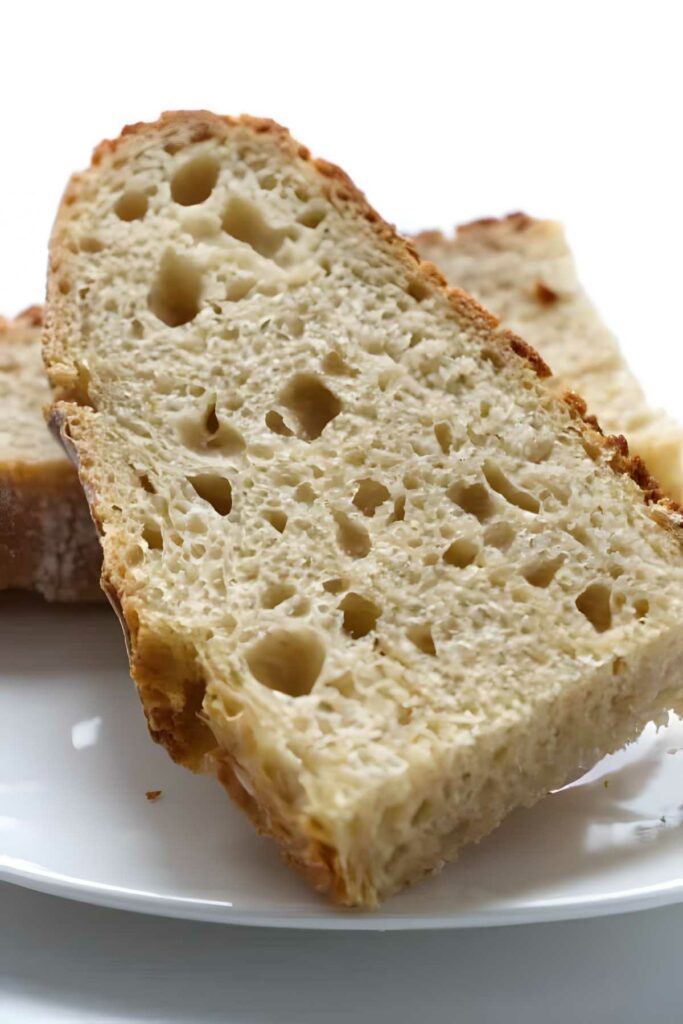
New to sourdough? You might want to start with my Dutch oven sourdough bread made with regular all-purpose flour.
Here’s Why This Einkorn Sourdough Bread Recipe Works
No kneading needed: Einkorn’s delicate gluten doesn’t strengthen with kneading, so a few folds and some rest time are all it takes.
Flexible timing: A long, slow ferment in the fridge gives you scheduling wiggle room and a deeper sourdough tang.
Straightforward ingredients: Just four basics; starter, water, all-purpose einkorn flour, and salt. No blends or fillers, so nothing masks einkorn’s naturally rich flavor.
Rich, complex flavor: Einkorn brings a naturally buttery, nutty taste that stands out in every slice.
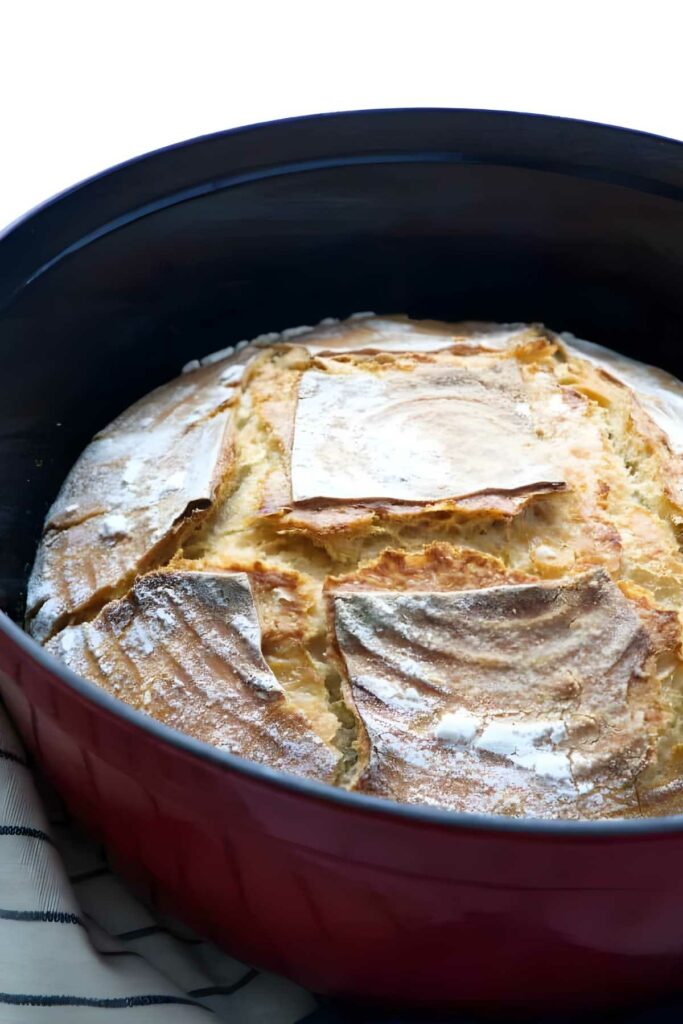
Recipe Tips
Use a mature starter: Your sourdough starter should be at its peak; bubbly, active, and recently fed, for the best rise and flavor.
Wet your hands: Einkorn dough is naturally sticky. A little water on your hands makes folding and shaping much easier.
Skip the countertop flour: Adding extra flour can weigh the dough down. Use wet hands and a damp surface instead to keep the texture light.
Proof by look, not the clock: Einkorn ferments faster than modern wheat. Watch for signs of rise instead of relying solely on time.
Flour your basket: A 50/50 blend of rice flour and einkorn flour helps prevent sticking. Rice flour doesn’t absorb as much moisture, so it creates a better barrier between the dough and the basket.
Choose your hydration level: This recipe gives you a range of water amounts so you can adjust based on your comfort with shaping sticky dough. Less water makes the dough easier to handle; more water gives you a softer, airier crumb. If you’re feeling confident, you can even add an extra tablespoon or two for an even lighter texture, just expect a looser dough that’s a bit more challenging to shape.
Storage: This bread keeps well at room temperature for 2 to 3 days. For longer storage, slice and freeze.
Einkorn Sourdough Questions, Answered
No problem. You can still make this bread even if your sourdough starter is made with regular flour. You have two options:
Option 1 (Quick and easy): Use your regular starter as-is. Feed it with your usual wheat flour, then use it in the recipe. Your loaf will be made with 100% einkorn flour except for the bit of wheat flour from the starter. It still works beautifully.
Option 2 (Gradual switch): Transition your sourdough starter to einkorn flour by feeding it several times with einkorn. Each feeding increases the percentage of einkorn in the starter:
1st feeding: 50% einkorn
2nd feeding: 75% einkorn
3rd feeding: 87.5% einkorn
4th feeding: 93.7% einkorn
5th feeding: 96.8% einkorn
This works because each feeding removes half the starter and replaces it with fresh einkorn flour and water. After four or five feedings, your starter is nearly all einkorn.
In the end, either method will give you a great loaf. It just depends on how “pure” you want your einkorn to be.
Yes! You can absolutely use a loaf pan if you’d prefer a more classic sandwich-style shape. In fact, using a pan makes the dough a bit easier to manage—especially since einkorn is naturally soft and sticky.
With a free-form or “hearth-style” loaf, the dough needs enough structure to hold its shape on its own. But in a pan, the sides offer support, so you don’t have to worry as much about the dough spreading out or flattening during the final proof or bake.
It’s a great option if you’re new to working with einkorn or just want a tidy loaf for slicing.
Want to try another ancient grain? Check out my spelt sourdough bread.
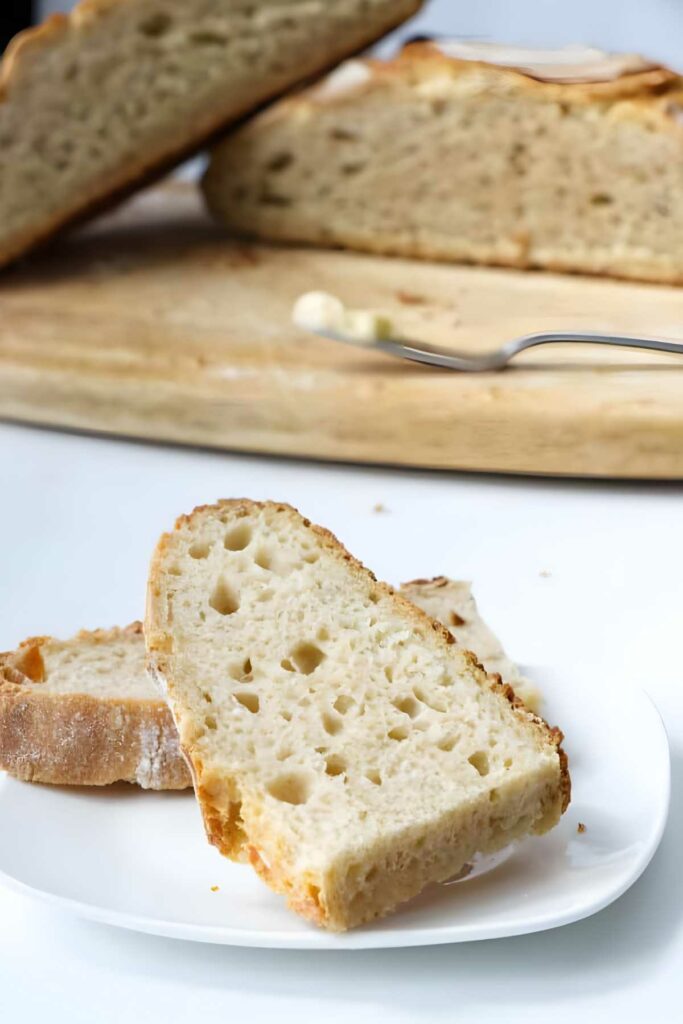
Sourdough Bread with Einkorn Flour
Einkorn sourdough dough can be a little tricky to handle. It is soft, sticky, and not always easy to shape. But the effort pays off. Using 100% all-purpose einkorn flour will give you a golden, crusty loaf with a tender crumb and deep, rich flavor.
Once you get the feel for it, this is the kind of bread that earns a regular spot in your baking routine.
Pin this now to find it later!
Pin It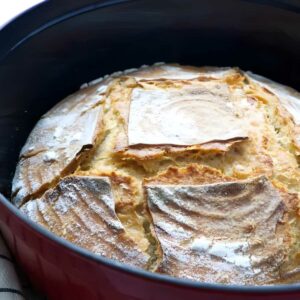
Sourdough Einkorn Bread
If you make this recipe, please leave a star rating and comment.
Ingredients
- ¾ cup active sourdough starter, 180 grams, see notes
- 1 ⅔ to 1 ¾ cups warm water, 392 to 413 grams
- 5 cups all-purpose einkorn flour, 600 grams
- 2 teaspoons salt, 12 grams
Instructions
- Mix the dough: In a large bowl, stir the starter into the warm water until fully dissolved. Add the flour and salt, and stir until it forms a rough, shaggy dough.
- Stretch and fold: After mixing, let the dough rest for 10 to 15 minutes. Then, with wet hands, grab one side of the dough, stretch it up, and fold it over to the opposite side. Rotate the bowl and repeat this motion 3 to 4 times, folding from a different side each time.Let the dough rest another 10 to 15 minutes, then repeat the stretch and fold process once more.
- Expect a sticky dough: The dough will be wet and sticky at this stage, that’s normal. Don’t add extra flour; it will make the bread dense. Wet your hands to keep the dough from sticking as you work with it.
- First rise (bulk fermentation): Let the dough rise at room temperature for 3 to 6 hours, until it increases by about 50% to 75%. This is your bulk fermentation stage.After the bulk rise, you’ll shape the dough and then do an optional cold proof (see below) to fit your schedule and boost flavor.
- Shape the dough: Turn the dough out onto a work surface and gently shape it into a round. If you're using a loaf pan, shape the dough into a log instead.
- Final proof: Place the shaped dough into a well-floured proofing basket or loaf pan. Cover and let it sit at room temperature for 1 to 2 hours to start the final proof, then transfer it to the fridge overnight or up to 15 hours.
- Einkorn sourdough should rise by about 50% to 75% before baking. Don’t let it double. If it hasn’t reached that after the cold proof, let it finish rising at room temperature. Keep an eye on it and move it to the oven once it hits that 50–75% mark to avoid over-proofing.
- Bake: Preheat your oven to 450°F. When it’s hot, gently tip the loaf into a Dutch oven or onto a baking sheet. Score the top with a sharp knife.If using a Dutch oven: cover for the first 30 minutes. Then remove the lid and bake for another 15–20 minutes, until the crust is golden and the loaf sounds hollow when tapped.
Notes
Nutrition
Nutrition information is automatically calculated, so should only be used as an approximation.
 Like this recipe? Rate & comment below!
Like this recipe? Rate & comment below!
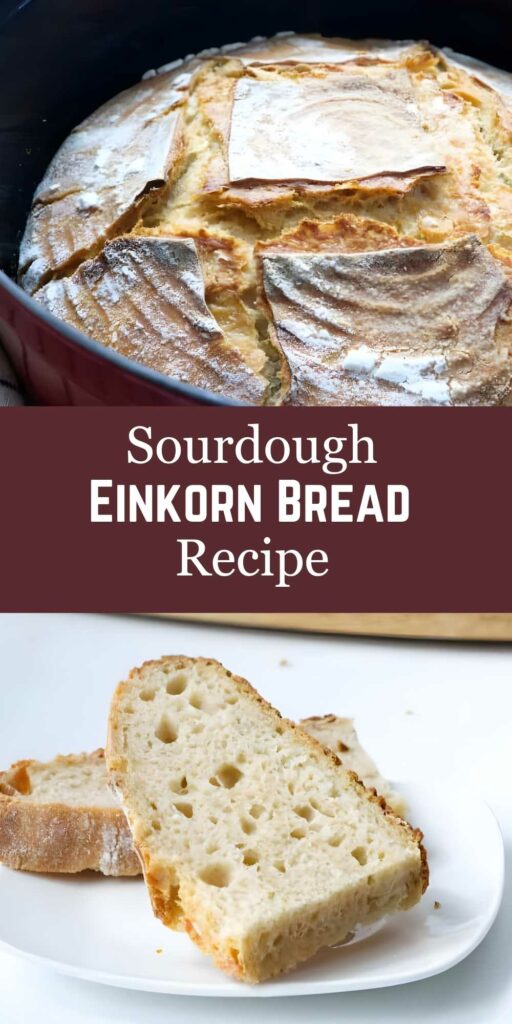
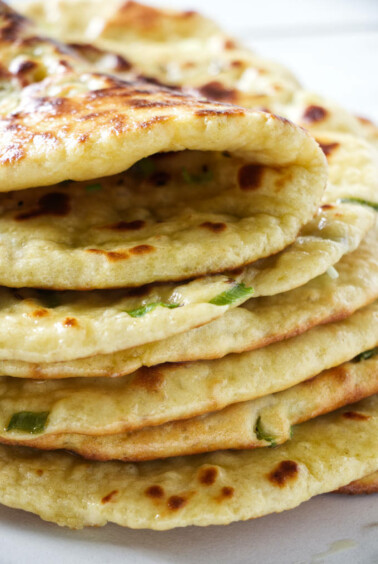
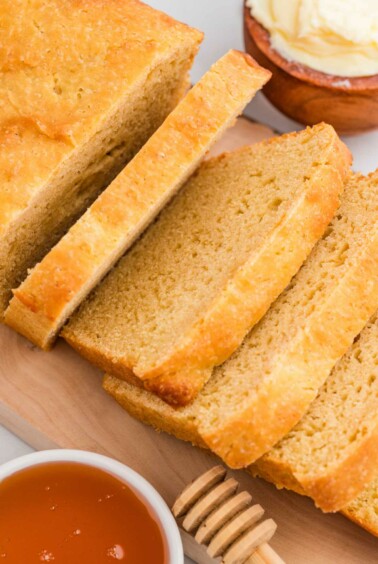
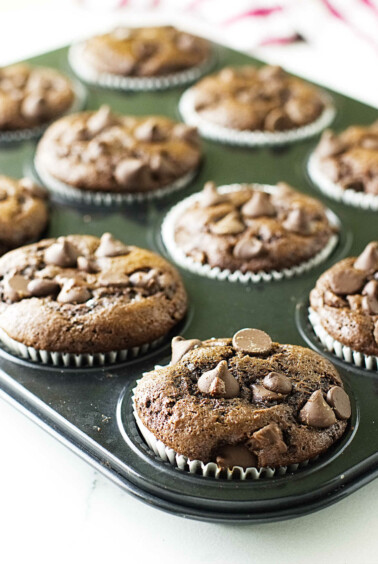
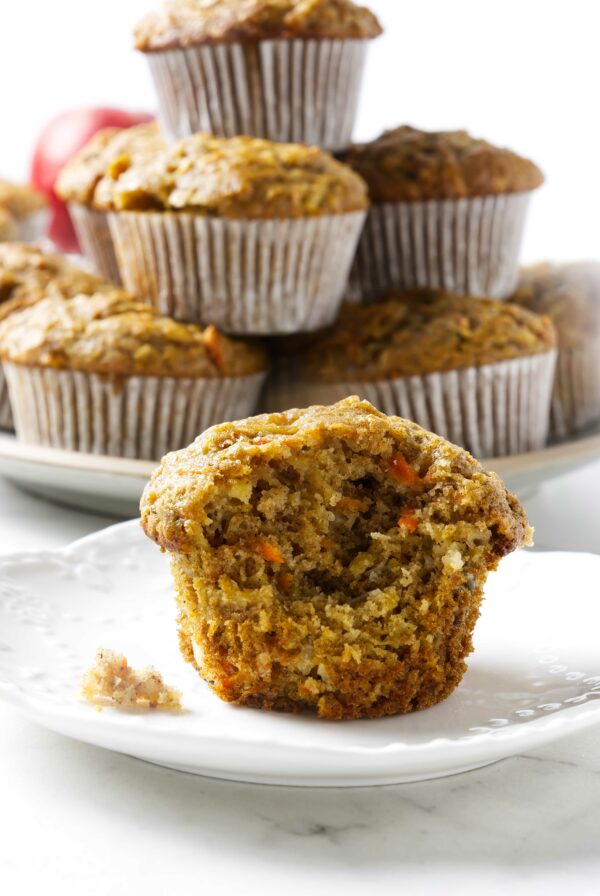
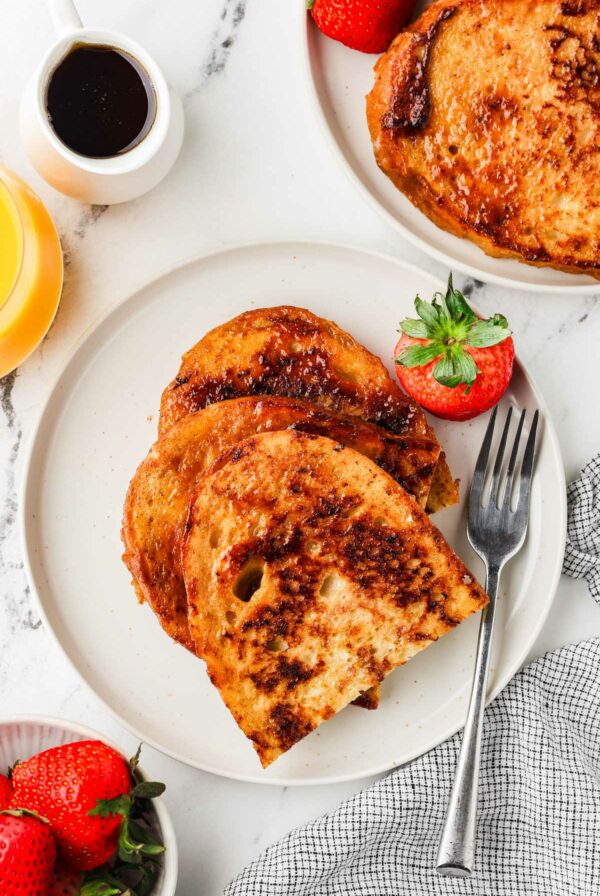
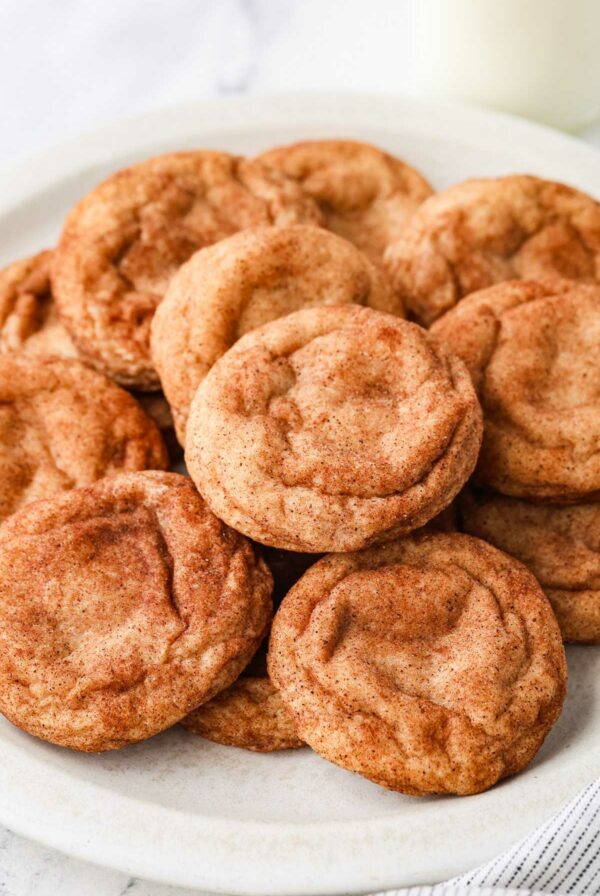
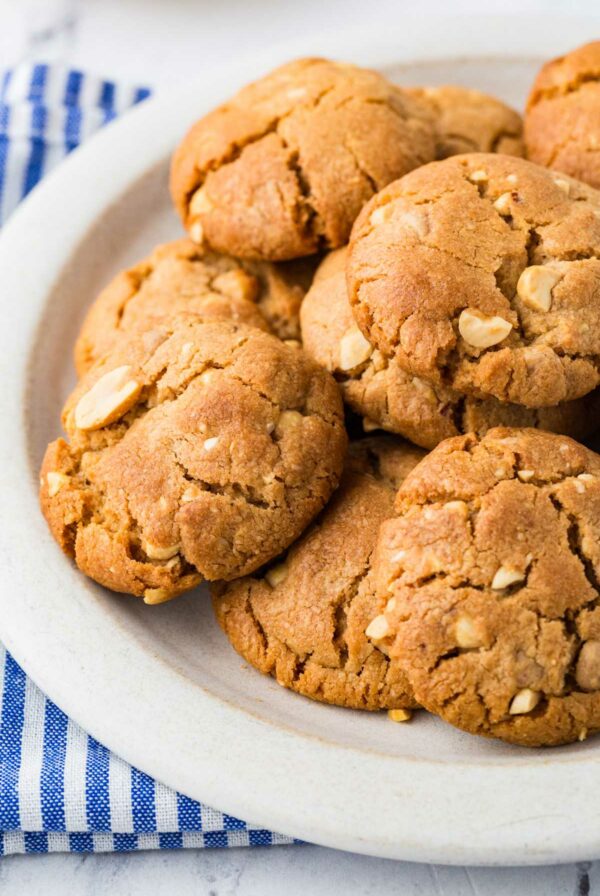










I am new to the whole sourdough bread baking game. I was so excited to find an Einkorn bread recipe! I just did the 3-6 hour rest, when I turned out the dough to shape it into a round loaf, it was more like a blob that could not be shaped. I weighed everything and used the correct amount of water. My starter is relatively new, so I wander if that is it. I’m not sure if it will be able to transfer it to the Dutch oven. What do you thing could be going on?
Oh there are so many variables in bread baking, especially sourdough bread baking. It could be your starter or it could be the weather or the temperature of your kitchen. Sometimes it is just how you work with the dough and shape the dough. If you watch the video in my basic sourdough recipe then you will see a good technique for shaping the dough. It tightens the dough ball up so that it holds its shape.
Thank you! I will get the hang of this! ?
Yes, I know you will if you keep trying. Sourdough baking is a bit of art, science, and experience. The more you do it, the better you get.
Do you suggest removing the lid of the Dutch Oven at any point towards the end of the bake? Most other recipes I’ve used call for doing that. Thanks!
Yes, the main reason to use a Dutch Oven is to trap steam during the initial rise of the bread. The steam prevents a hard crust from forming on the bread and that lets the bread rise higher. You only need to give the bread about 20 minutes to complete the rise under the lid then take the lid off so the crust doesn’t get too hard.
Hello! Should I heat the Dutch Oven before transferring the bread into it? Thank you in advance.
Either way works. If you heat it up then you will get a crispier crust and a little more rise to the bread but be careful because it is easy to burn yourself. The bread turns out just fine if you don’t want to heat the Dutch oven first so don’t feel like you have to.
Sounds like a great recipe, can’t wait to try it.
I have been looking for a good Einkorn recipe and I appreciate the explanations too! Thank you so much for adding the cup measurements. I don’t have room in my kitchen for a scale and even if I had a large kitchen, I don’t like too many appliances all over the place and I never will so thank you!
Thanks Deb. I understand about the appliances I have a love/hate relationship with all my kitchen gadgets and appliances. I love them all but I hate the space they take up. I had my husband build some shelves in our garage to store some of my stuff that I don’t use on a daily basis. I’m pretty sure I have a sickness 😉
First time bread maker 🙂 After removing from the oven, do i immediately take the bread out of the Dutch oven? Or let it sit and cool in it? Also, how do I achieve that nice dark golden crust on the top? Mine looks the same as when I put it in the oven, didn’t break open at my cut lines. I cooked for 60 minutes at 450F. I was nervous to continue cooking as I didn’t want to burn it or dry it out.
Take the bread out of the Dutch oven and let it cool on a rack. If you forget to take it out, it won’t make a huge difference but can sometimes make the bottom of the crust less crisp because steam gets trapped under the bread. If your bread didn’t get a nice brown crust it may be because your oven runs a bit cool. Increase your oven temp to 475°F or 500°next time you bake. If your cut lines didn’t break open it may be because the exterior of the loaf had dried out before you put it in the oven. Try spraying the loaf with some water before you put it in the oven. The spray of water will also create steam in the Dutch oven which will make the bread rise a bit higher and give it a nice shiny crust.
Do you all purpose einkorn flour or whole wheat einkorn?
This recipe is made with all-purpose einkorn flour. Thanks for the question, I will update the recipe card.
Hi! Curious if you know the total weight of a cooked loaf? 1 lb? 2lbs? Thank you!
I’m not sure Sarah but I would guess it is close to 2 pounds. This recipe makes a hefty loaf.
The flavor of this bread is fantastic, but the crust got a little too brown. Should I lower the oven temperature a little, or reduce the baking time?
I would lower the oven temperature a bit. Home ovens are notoriously inaccurate. You might try lowering by 50° next time and check on it a bit sooner. I hope that helps
Thank you so much for this recipe! I’ve been making it once a week for a couple months. The flavor is very good. I noticed though that my bread ‘dough’ never comes out as a dough consistency. It is more like a batter I have to pour. I’ve tried altering the amount of water and flour and also sifting the flour before weighing. I’m not sure what the problem can be. Any ideas?
Thank you
There are a few things that could be contributing to the super wet dough. Since you are weighing your flour then I would guess the most likely causes are from the starter or the weather. Try cutting way back on the water and start with 1 cup then add more water in 1/4 cup amounts until you get the right consistency. You do want the dough to be pretty wet and sticky but it shouldn’t be a pourable consistency.
I hope that works for you. Please let me know if you run into more issues
@Dahn Boquist,
Word for word—same exact problem as Danette Sierra! I’ve tried several recipes (with similar “batter” results) but this one is my favorite. I am relatively new to sourdough (have been making off and on for about 6 months) but I did notice that 600g of all purpose Einkorn flour is about 4 cups rather than 5 cups. I am wondering if that is the problem.
I am working on adjusting the water to have a “dough” rather than a “thick batter”…with that being said, the bread comes out great. What would be really helpful is a video of what Einkorn dough looks like when first mixed. Reading about “shaggy” and “sticky” is not the same as seeing it. I guess my questions is: Should the dough look like other sourdough videos when combing ingredients? If so, then I will drastically adjust measurements rather than the small increments I have been doing.
All-purpose einkorn flour packs into a measuring cup very compactly and it is easy to over-measure the flour if you use a measuring cup. I’m using the standard weight for 1 cup of einkorn flour which is 120 grams. The only way you will get that weight is if you fluff the flour then lightly spoon it into the measuring cup. However, there are a lot of variables with sourdough baking, not just the flour. Go ahead and make some larger adjustments to the recipe to get the right consistency. If you watch the video in my spelt sourdough bread it will give you an idea of what a ‘shaggy” dough looks like. As soon as the dough gets mixed it looks rough and ‘shaggy’. After it gets kneaded then it looks smooth. You won’t need to knead the einkorn bread however, the video will give you an idea of how the shaggy, sticky dough looks. The einkorn bread dough will be a bit stickier than the spelt bread dough but it smooths out after it goes through the rest and folding stages. I hope that helps.
Does the bread need to come to room temp before baking? It says to let it rise in the fridge for 10-15 hours. The next step is bake. Is this correct, from fridge to oven, or is the recipe missing an step/instruction.
Thank you for your reply.
Bread proofed in the fridge does not have to come to room temperature before you bake it unless you want it to sit out and rise a bit more. Otherwise, it can go straight from the fridge into a hot oven. Thanks for asking, hope you enjoy the bread